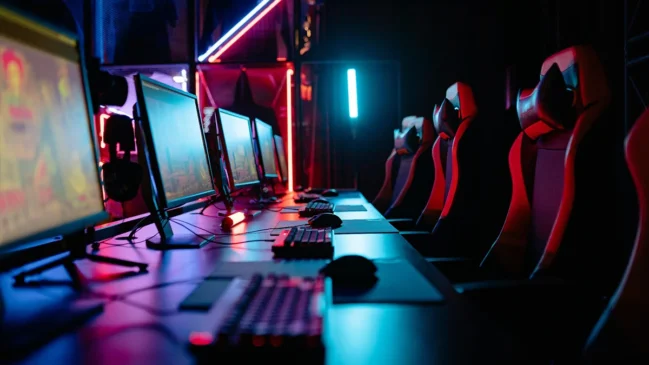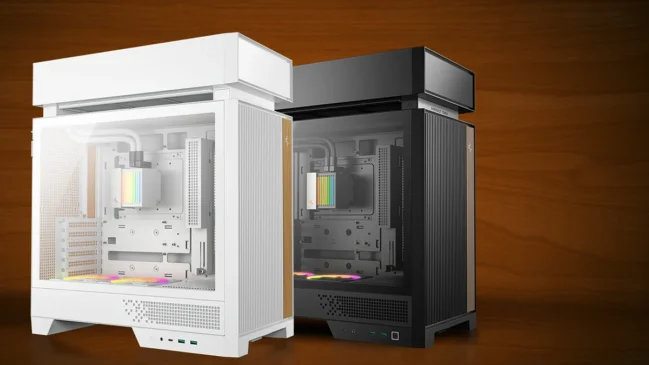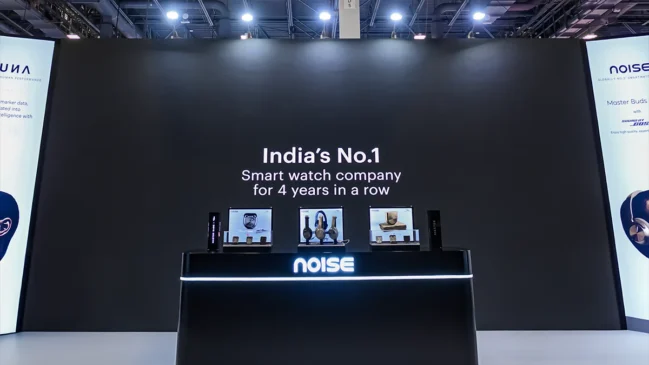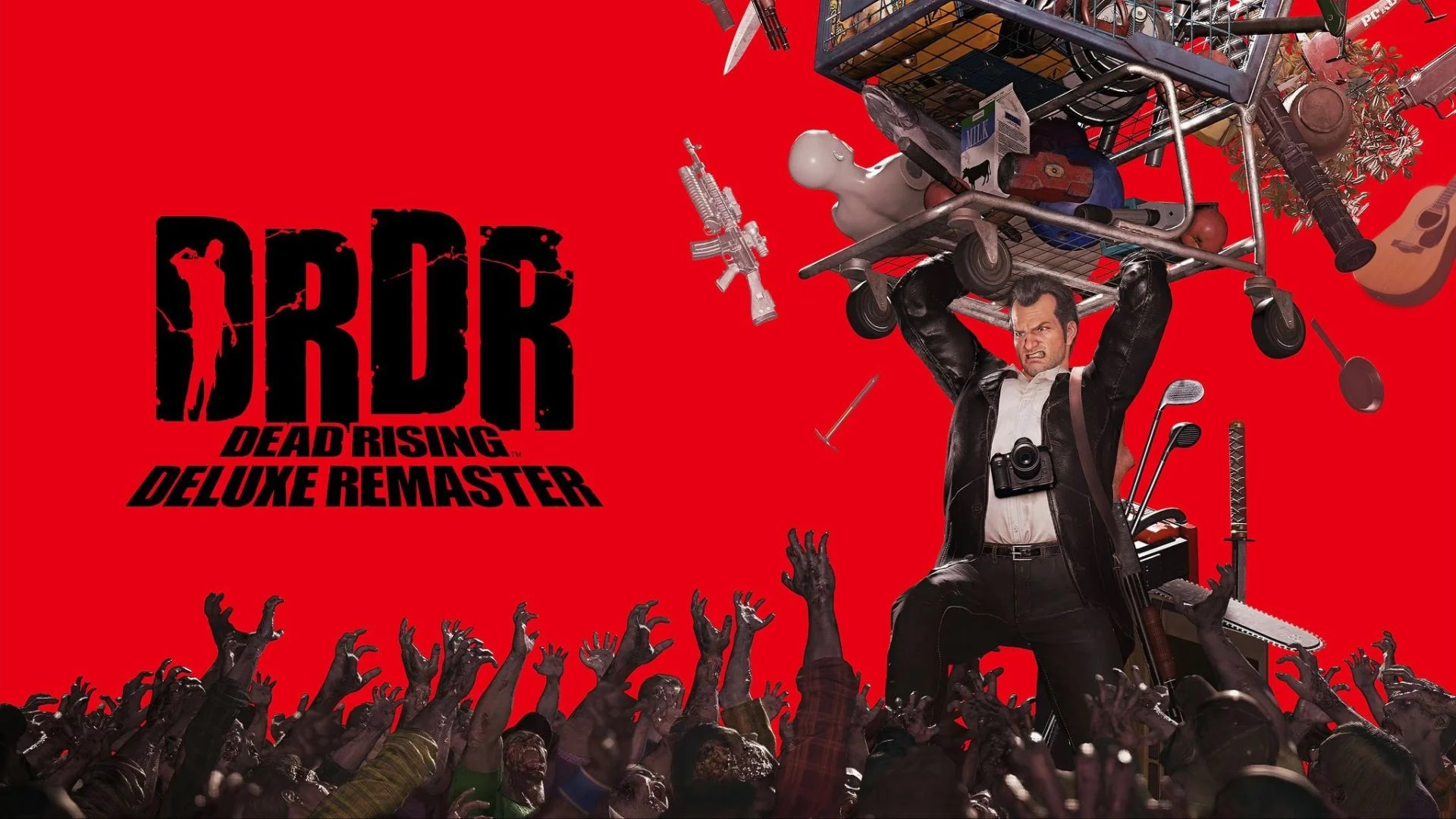
Capcom has built a reputation for delivering polished remasters of their classic titles, from Resident Evil to Street Fighter. Their recent ventures into reimagining older games have received praise for blending nostalgia with modern technology. With Dead Rising Deluxe Remaster, Capcom revisits their iconic 2006 zombie-slaying sandbox, aiming to strike a balance between faithful recreation and thoughtful modernization.
AT A GLANCE
- Publisher: Capcom
- Developer: Capcom
- Genre: Action-Adventure, Survival Horror
The original Dead Rising captivated players with its over-the-top zombie carnage set in a sprawling shopping mall—a satirical playground reflecting the consumerist culture of the time. Now, with enhanced 4K visuals, smoother frame rates, and updated controls, Dead Rising Deluxe offers first-time players a more accessible experience, while veteran fans may notice subtle changes in the game’s tone and difficulty. Although the core gameplay and setting remain largely unchanged, the modern enhancements smooth out the original’s rough edges, allowing this remaster to stand out among Capcom’s growing list of revitalized classics.
Story
At the heart of Dead Rising lies a story that cleverly balances dark satire and chaotic survival. The plot centers around Frank West, a cocky freelance photojournalist with a nose for uncovering the truth. Frank’s instincts lead him to the fictional town of Willamette, Colorado, where a military quarantine has sealed off a massive shopping mall. Sensing a big scoop, Frank flies in by helicopter, only to find himself trapped inside the mall with hordes of flesh-eating zombies.
While the surface-level story of a zombie outbreak is straightforward, Dead Rising excels in its deeper, more biting commentary on American consumerism. The game’s setting — the sprawling Willamette Parkview Mall — serves as a perfect backdrop for this social critique. The zombies shuffling mindlessly through the mall’s corridors, once ravenous consumers, now mirror a society obsessed with consumption. Frank, armed with a camera and whatever weapons he can grab from the mall’s stores, navigates this grotesque playground of excess, adding a darkly comedic edge to the tale.
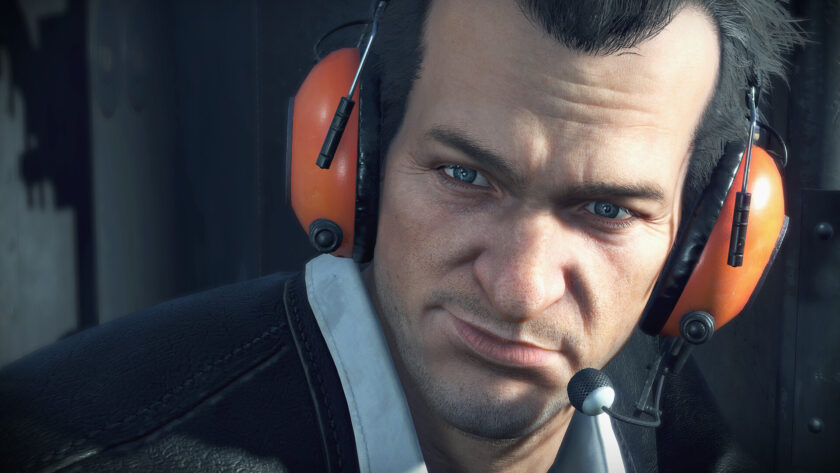
Throughout the game, Frank unravels the mystery behind the zombie outbreak, discovering that it’s not simply a natural disaster but a man-made catastrophe linked to corporate greed and scientific experimentation gone wrong. As Frank meets various survivors, some helpful and others hostile, the narrative explores themes of morality, human desperation, and the breakdown of society under pressure. These survivors are not just mindless NPCs — they add depth to the story, each with their own personal motivations and struggles in the face of the apocalypse.
Frank’s journey is punctuated by encounters with “Psychopaths,” deranged humans who have succumbed to madness. These encounters serve as dark reflections of the crisis, showing how different individuals handle the collapse of order. From a power-hungry cult leader to a clown with a chainsaw, these characters inject a mix of horror and humor into the narrative, often pushing the story’s satire further.
As the clock ticks down, Frank races to uncover the truth behind the outbreak while trying to survive the chaos. The narrative threads come together to highlight not just the horror of a zombie apocalypse, but also the horrors lurking within human nature and unchecked consumer culture. In this way, Dead Rising’s story delivers more than just thrills and spills; it’s a satirical reflection of modern life that resonates with both fans of zombie fiction and those looking for deeper commentary.
By the end of the 72-hour countdown, Frank’s struggle becomes more than just a fight for survival — it’s a quest for the truth, a battle against exploitation, and ultimately, a fight against humanity’s darker impulses.
Gameplay
At its core, Dead Rising Deluxe Remaster retains the signature blend of chaotic zombie-killing action, allowing players to turn almost any object into a weapon as they navigate the Willamette Mall. From slicing through hordes with a katana to using a lawnmower for some old-fashioned carnage, the absurd variety of tools at your disposal still drives the game’s gleeful mayhem.
The essence of Dead Rising‘s gameplay has always been its absurd, sandbox-style approach to zombie-slaying, which set it apart from other titles in the genre. At the heart of the experience is Frank West’s freedom to grab anything within the sprawling Willamette Mall and use it as a weapon. Whether it’s something as obvious as a baseball bat or as ridiculous as a mannequin arm, players are encouraged to experiment, turning everyday objects into zombie-slaying tools. This level of interaction with the environment is what first made Dead Rising so addictive and gave it its unique identity.
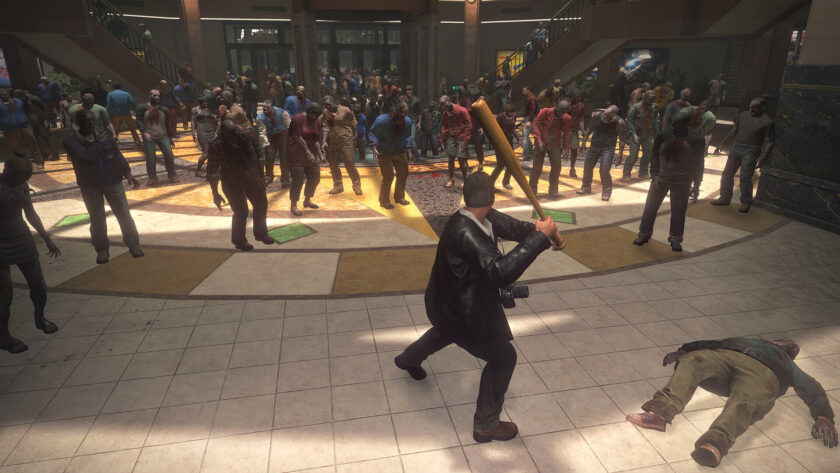
What makes the gameplay truly memorable is the sheer variety of options. Few games let you run through a horde wielding a chainsaw, then switch to a shopping cart to bulldoze zombies, all while dressed in a ridiculous costume pulled straight off a store rack. The flexibility and creativity in dispatching the undead is endless, and that freedom creates countless unpredictable, hilarious moments.
Another hallmark of the gameplay is its combination of action with light RPG elements. Frank gains experience points (PP) through combat, completing objectives, and taking dramatic or humorous photographs. As you level up, Frank gains new abilities, health, and inventory space, gradually transforming him from a relatively helpless photographer into a powerful zombie-slaying machine. The balance between exploration, survival, and leveling up gives the game a satisfying sense of progression.
On top of that, the game’s time-based mechanic injects a layer of tension. Players must complete certain story objectives before time runs out, often forcing them to make tough decisions about how to spend their limited hours in the mall. The clock is constantly ticking, creating urgency, but it also adds replayability, as players can return for another run to see what they missed.
Boss battles, known as “Psychopaths,” are another standout feature. These human foes are often deranged survivors driven mad by the outbreak, each with their own distinct personalities, backstories, and sometimes dark humor. These encounters break up the regular zombie-slaying with unique, often challenging fights that require players to approach combat differently.
One of the most noticeable improvements is the introduction of a smooth 60fps frame rate, which enhances the fluidity of movement and combat, making it easier to execute those satisfying multi-zombie takedowns. The visual upgrade to 4K resolution further breathes new life into the game, with more detailed environments and character models. The lighting, in particular, creates an eerie atmosphere, especially during the night sequences when dimly lit areas are contrasted with grotesque, shambling figures.
A major quality-of-life addition is the revamped control scheme. The original game’s tank controls have been replaced with a more intuitive modern setup, though purists can still opt for the classic controls. The autosave feature also eliminates the frustration of losing progress, especially during the game’s more challenging moments, which is a significant improvement over the original’s punishing save system.
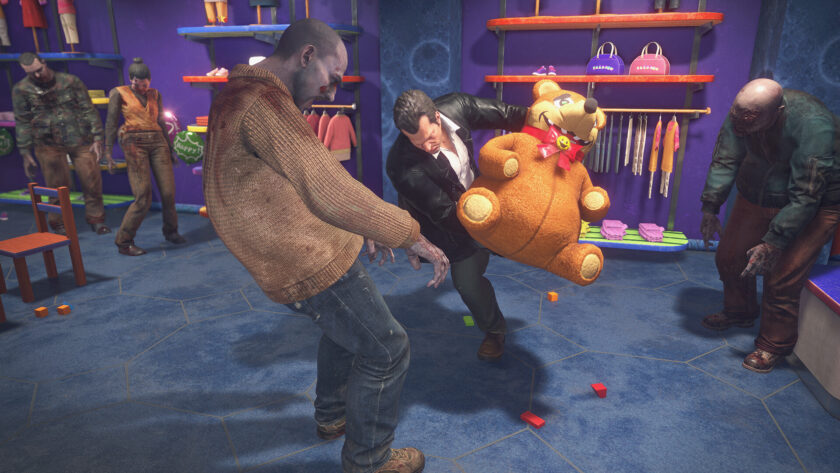
Combat feels more responsive, with updated hit detection and smoother interactions between Frank and the zombie hordes. Additionally, the game now features a more forgiving difficulty curve, allowing players to build experience and level up faster, which in turn unlocks new skills and makes encounters feel less grindy than before.
Visuals and Audio
In the Deluxe Remaster, Capcom has made significant improvements to the visuals without sacrificing the game’s original cartoony charm. Leveraging the RE Engine, the mall has been beautifully rebuilt with enhanced textures, lighting, and environments. The shift to 4K resolution and a smooth 60fps frame rate means that every zombie encounter looks more detailed and fluid. Blood splatters across the walls, and shattered glass from TVs used as weapons glistens realistically, enhancing the carnage in every battle.
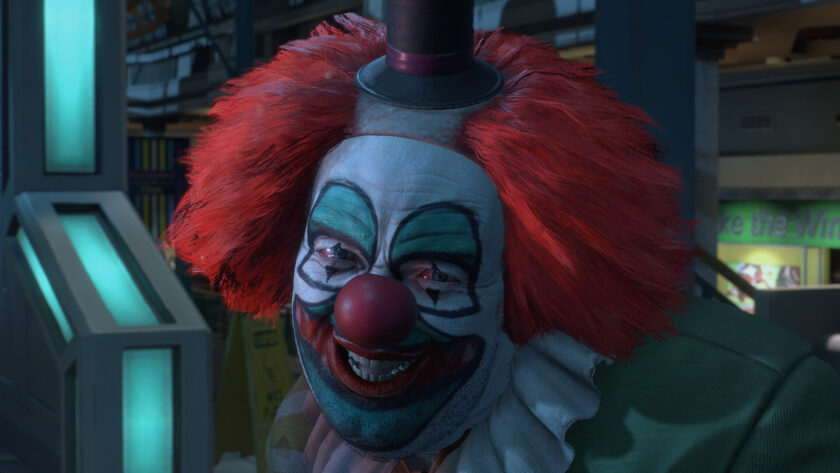
One of the standout visual upgrades is the improved lighting. The contrast between the brightly lit, consumerist paradise of the mall and the eerie, shadow-filled areas overrun by zombies is more striking than ever. The reflections on the mall’s polished floors, especially during nighttime, add a layer of realism that draws you further into the chaotic setting. These details make exploring the mall not only more visually rewarding but also more immersive.
Character models, however, are a mixed bag. While some like Frank West and the zombies look sharper and more detailed, certain secondary characters and Psychopaths still carry a slightly plastic, exaggerated look. The exaggerated expressions, which were a part of the original’s charm, are still present, though some may find the contrast between the more realistic backgrounds and the somewhat dated character designs a bit jarring at times. However, this isn’t a deal-breaker, as the game’s tone embraces its campy, over-the-top feel, and the visuals support that.
In the audio department, Dead Rising Deluxe Remaster maintains the quirky, energetic atmosphere that made the original game so memorable. The remaster refines some of the sound effects, but it keeps the nostalgic audio experience intact. The moans and groans of zombies, the clanging of makeshift weapons, and the satisfying crunch of undead skulls are all elevated through enhanced sound mixing, giving every attack a weighty, impactful sound.
One of the highlights of Dead Rising has always been its eclectic soundtrack. From the upbeat muzak playing over the mall’s speakers to the tense, atmospheric tracks that build during Psychopath encounters, the game’s music enhances the sense of absurdity and danger. These contrasting soundscapes work in tandem to amplify the game’s dark humor and satirical edge. The ambient sounds of the mall — from crackling televisions to the distant hum of escalators — create a lived-in, eerie setting, while the radio chatter from survivors adds a sense of urgency to the experience.
Voice acting remains a crucial part of the experience, with Frank West’s gruff, confident delivery standing out. While some of the performances feel a little campy, that’s part of the charm, as it fits the game’s tongue-in-cheek tone. Psychopaths are given wild, exaggerated vocal performances, adding to the unsettling yet comedic nature of their characters.
Overview
Summary
Dead Rising Deluxe Remaster successfully brings the chaotic, zombie-infested world of Willamette Mall back to life, making it more accessible to modern players while preserving its signature charm. The enhanced visuals, smoother frame rate, and quality-of-life improvements elevate the experience, especially for newcomers. While some of the character models show their age, the overall aesthetic remains engaging, capturing the mix of humor and horror that defines the series. Veterans may miss some of the original's tougher challenges, such as the manual save system and harsher difficulty curve, but the improvements make the game more approachable without losing its core identity. The biting satire on consumerism, paired with the creative weapon crafting and over-the-top zombie action, still holds up in this remaster. For those who have never experienced Frank West's zany mall adventure, or for players seeking a more polished version of a classic, Dead Rising Deluxe Remaster is a worthwhile revisit.

